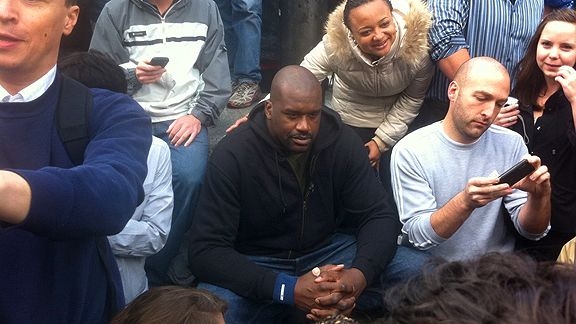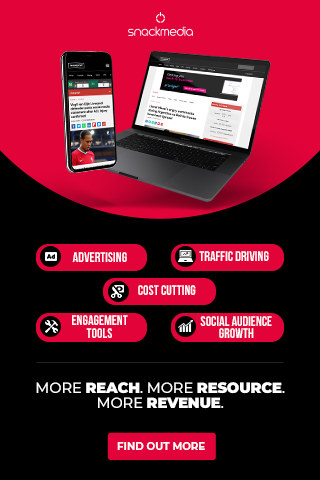3 Ways Teams Use Social Media to Engage with Fans
A while ago now the guys at the leading social relationship platform, Hootsuite, put together a whitepaper called the ‘3 Ways Sports Organisations Use Social Media to Increase Fan Loyalty’. (worth a read through).
It’s an interesting paper that gives examples from the US mainly but also the odd UK team is mentioned, especially Liverpool FC. It’s an area we are always looking to get better at within our own roles so I wanted to take a look at it with some of my own additions.
In recent months I’ve attended many events, not only my own UKSN ones, but those at Social Media Week, the Sports Tech Summit and IC Tomorrow. All have a concentration on fan engagement, the starting point of any strategy before you can get to commercialisation in any significant way.
It doesn’t matter if you’re listening to Arsenal, the NBA, Wimbledon or a leading digital agency. The message is the same around gaining people’s attention and bringing them closer to the team/brand/league to increase the fan base and in turn the brand itself (especially in new markets).
Here are the 3 ways in which we can all look to do what we do a little better.
1) Humanise and Personalise Teams and Athletes
In the days before Facebook and Twitter (was there such a time!) it was all about the broadcast ability of your brand. This meant that we were limited to TV, print, email, website and offline ways in which to interact with fans. That means interaction can essentially be only one way.
It was hard to get access to those who didn’t come along to a game/event but were still interested. You could have a great story to tell but the only places you could control that message was on a corporate looking website (content controlled by the PR guys) and in email campaigns which were commerce focused (tickets, merchandise).
This has changed and so have the tactics that have had to be employed. It’s no longer about putting across a corporate sounding message that shouts out about how great you are. That’s the no. 1 way in which to turn people off.
For athlete’s it was even worse, with no ability except through the press to respond to rumours. Now they can do so easily, being the authority the fans trust rather than the red tops. The downside for athletes has been the ease in which fans of opponents, trollers and those of an unpleasant nature generally can dish out abuse. This has been a shock for some but steps are being made in which to make this better.
In general, social media is about having personality and being open to interacting with fans/consumers. Never before have such opportunities existed and its only going to go even more in this direction. So putting your head in the sand waiting for the storm to pass is not an option!
Whether you’re a team or an athlete, giving insights into what is happening (the good and the bad) enables fans to gobble up the content they have been dying to get hold of.
Q&A’s, Twitter takeover, competitions to meet an athlete, etc are all really easy and good ways for each to drive up their own value to the fan and to sponsors. Those with the big personalities are becoming even more desirable to brands and having a social media presence is now a must.
The NBA, NFL and UFC have really led on fan engagement through social media. In Europe we still have a lot to learn but are getting there slowly.
2) Offer Fans Unprecedented Access To Teams Through Unique Content
Both teams and athletes are capable of delivering the content that is most desired, away from the games themselves. Manchester City have done a great job in leading on this one, giving fans daily access to training sessions, interviews and the fun and games (banter) that goes on between players.
Their ability to be reactive and willingness to try new things led to them doing their own Harlem Shake just as the craze was taking off, leading to over 8.7m views on their own YouTube channel. This gave them great PR, a laugh for the fans and, through a commercialised YouTube deal, probably an extra revenue stream too.
Fans want to know what their favourite athletes get up to away from the pitch/track. An insight into their training session, what diets they have to stick to, who they hang out with, what is their personality really like. The king of this in the early days of Twitter was undoubtedly Shaq O’Neal, he found ways to meet and engage with fans that no-one had seen before. His Random Acts of Shaqness were great to see.
I remember following the Ryder Cup back in 2010, the first one where many of the players were on Twitter. Throughout the event you got a great insight into what they were thinking, their support for teammates and at the end, how they celebrated. Who can forget Rory McIlroy drinking Jaegarbombs from the Ryder Cup and Tiger Woods/Phil Micklelson dominating at table tennis.
As a team or federation (even a brand) you have access to things that no-one else can replicate. Whether that be time with the athletes, access to training, life in the office, a day with the manager or providing updates to those who can’t make it to the game. There are so many opportunities that don’t rely on using live match footage.
3) Make fans contributors to teams and unite them
Sports fans are amongst the most passionate there are in the world. You see the football fans in Brazil or badminton fans in Malaysia, they paint their faces, dance all day and sing till they go hoarse.
Until recently it has been hard for teams to capitalise on this outside of the stadium but all that is changing. You can move beyond asking for fan photo’s by email and posting them onto a page on the website no-one sees.
The most interesting content often comes from fans, especially now with the dominance of the smart phone. So what can you do to maximise this?
Some have developed galleries on Facebook and Tumblr to bring together this content. You also have technologies that can update in real-time to integrate with Twitter, Facebook and much more.
Companies such as Storystream, Capsool and Stackla have already been working with a variety of teams, federations and brands. They collate and make sense of the content, whilst allowing the team/brand to stay in control using CMS systems and key word blockers. In August we wrote about #citystories, a great way for a team to build up their story through the words and eyes of their fans.
The tech is also there to allow fans to vote by Twitter for their Man of the Match. You can manually count each hashtag or use the systems that the likes of Pulse Innovations and Mass Relevance provide. This is just the tip of the iceberg, but remember not to get carried away with the technology and remember that its about the fans and what they want.
You don’t have to spend huge amounts of money to succeed in using social media, there are many teams and athletes who have done great jobs with little to no budget. But taking these three main lessons you can take them, shaping to fit with your own goals/needs and will be a great stepping-stone to success. Good luck.
About author
You might also like
SPORTEL 2021: Day One Recap
This year’s prestigious SPORTEL convention kicked off in sunny Monaco today, welcoming a host of familiar faces as well as plenty of new ones. Doors opened at 8:30am with businesses
Six Founding Riders Set To Bring The Vision Of The UCI Track Champions League To Life
Olympic Champions, UCI World Champions and World Record holders join the new track cycling competition debuting in November 2021 The UCI Track Champions League is delighted to announce that six
Sports related spending to soar this summer as pre-pandemic life resumes
New insights from eBay Ads UK reveal the potential for brands to engage with an excited but nervous nation as sports events get back on track As pubs and indoor








